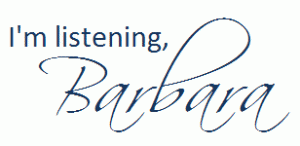 About a week ago, I sent out a request on Twitter for ideas for how to back up a WordPress.com blog. You see, all of my students at Georgia Southern University and Southeastern University (about 200 total) are blogging this semester as part of their course engagement and participation requirements. I had a sinking feeling that some of my students might not have the information they are posting at their blogs saved anywhere else, and wondered what would happen if WordPress.com went down or out of business.
About a week ago, I sent out a request on Twitter for ideas for how to back up a WordPress.com blog. You see, all of my students at Georgia Southern University and Southeastern University (about 200 total) are blogging this semester as part of their course engagement and participation requirements. I had a sinking feeling that some of my students might not have the information they are posting at their blogs saved anywhere else, and wondered what would happen if WordPress.com went down or out of business.
This afternoon, WordPress.com was down for a while. And some of the students (and many, many others) began to — in layman’s terms — freak out. As I suspected, they didn’t have their information backed up.
We love having free services available for ourselves and our students. We expect the services to work all the time. And when they don’t? Life is unpleasant. And a little scary.
Because I wanted a little more control over my blog, I chose to self-host it using BlueHost. It costs me about $100 a year, which is a reasonable investment for me. (GoDaddy is less expensive, but I find its ads offensive so I choose to spend my money elsewhere.) Do I force my students to pay to blog? No. Should I recommend it as a good option? I’m thinking that I should now.
That all said, what should students do to be sure they have backup copies of all their blog posts (especially when they will be graded on their blogs)?
Here are a few ideas:
- Use the WordPress Export feature to back up your entire blog, comments and all. I do this at least once a week.
- Write your blog posts in Microsoft Word, and use Word to publish to WordPress. It’s easy to set up. Sometimes you need to do a little cleanup of the post when it gets to WordPress, but most if the times things come through cleanly. (Save your files to a folder on your hard drive in addition to posting them online.)
- Write your blog posts in Microsoft Word and copy/paste them to WordPress. Sometimes the formatting gets funky when you do this, but if you don’t mind the cleanup, it works okay. (Save your files to a folder on your hard drive in addition to posting them online.)
- Write your blog posts in Google Docs and copy/paste them to WordPress. The formatting seems to come through pretty cleanly with Google Docs. (Save your files to a folder on your hard drive in addition to posting them online.)
- If you’ve lost a post that you already published, you may be able to recover it by going to Google, then searching for the title of the post or the name of your blog. You may find that Google has the information in its cache. Or for older posts, try the Wayback Machine (you’ll need to know the URL to the blog to make this one work).
Bottom Line: When you’re working in the cloud, especially on free sites, have a back up plan. (Back up? Get it?)
What other ideas would YOU recommend?





